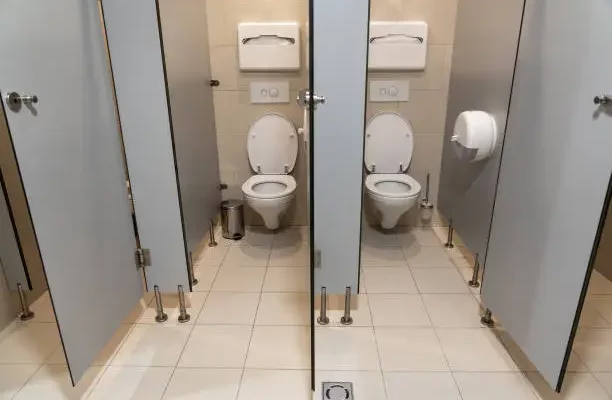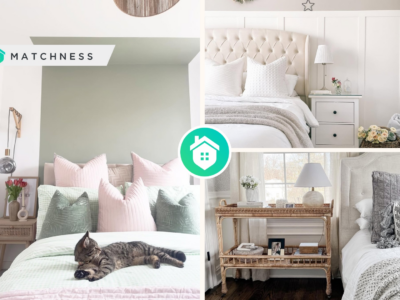Aesthetics play a crucial role in choosing toilet partitions. While functionality and durability are primary considerations, the visual appeal can greatly influence user experience and satisfaction. A well-designed, attractive partition can enhance the overall environment of the restroom, making it more inviting and comfortable.
Materials for Toilet Partitions
In choosing toilet partitions, the material used is of paramount importance. There are several options to consider, each with unique advantages and aesthetic appeal.
- Phenolic Partitions: Phenolic toilet partitions are made from compressed layers of paper and resin, offering durability and resistance to moisture, making them suitable for humid environments.
- Stainless Steel Partitions: These partitions present a sleek, modern look, and are resistant to rust and vandalism. They are ideal for high-traffic restrooms due to their robust nature.
- Solid Plastic Partitions: Solid plastic partitions are highly durable, water-resistant, and low-maintenance. They come in various colors, allowing for a good degree of customization.
- Powder Coated Steel Partitions: These partitions are budget-friendly and offer decent durability. They come in various colors and finishes, allowing for aesthetic flexibility.
The choice of material should balance aesthetics, durability, maintenance requirements, and budget constraints.
Color and Finish of Toilet Partitions
The choice of color and finish for toilet partitions can greatly influence the aesthetics of a restroom. It’s not just about matching the overall décor of the restroom, but also about creating a space that feels clean, comfortable, and visually appealing.
Neutral Colors: Neutral colors such as white, beige, and gray are commonly used for toilet partitions. They offer a clean, minimalistic look and easily blend with most restroom decors.
Bright Colors: For establishments looking to make a statement, bright and bold colors can be an excellent choice. Colors like red, blue, or yellow can add a pop of color and make the space more lively and energetic.
Metallic Finish: Stainless steel partitions with a brushed or polished metallic finish give a modern and sleek look. They reflect light well, making the space appear larger and brighter.
Textured Finish: Some partition materials such as phenolic and powder-coated steel offer a textured finish. This can add an element of sophistication and uniqueness to the restroom aesthetics.
The choice of color and finish must align with the overall design theme of the restroom and the impression the establishment wants to make on its users.
Transparency and Light in Toilet Partitions
The aspect of transparency and light while choosing toilet partitions might seem unconventional, but it can significantly influence the overall aesthetics and functionality. Transparent or semi-transparent partitions may not provide the needed privacy in restrooms; however, the incorporation of light-enhancing materials can be a game-changer.
Frosted Glass Partitions: Frosted glass partitions strike a balance between privacy and aesthetics. They allow natural light to pass through, reducing the need for artificial lighting, and adding a touch of elegance.
Translucent Plastic Partitions: Similar to frosted glass, translucent plastic partitions let light permeate while ensuring privacy. They are also more durable and cost-effective compared to glass.
Light Reflective Materials: Materials like stainless steel with a polished finish or light-colored powder-coated steel partitions help reflect light, making the restroom appear brighter and larger.
Incorporating light-enhancing materials in toilet partitions can contribute to a well-lit, comfortable, and aesthetically pleasing restroom environment, while also potentially reducing energy consumption. However, the level of transparency should always prioritize user privacy and comfort.
Configuration and Style of Toilet Partitions
When selecting toilet partitions, the configuration and style should also be given equal consideration as they influence both aesthetics and functionality.
Standard Partitions: These are the most common type of toilet partitions. They consist of three walls and a door, providing complete privacy. The partitions are attached to the rest of the bathroom by metal pilasters. They are practical, functional, and suitable for a wide range of restrooms.
Urinal Screen Partitions: These are used to provide privacy in men’s restrooms. They are shorter and don’t include a door. The design is versatile, allowing for either wall-mounted or post-supported installation.
European Partitions: These partitions offer a higher level of privacy, extending from floor to ceiling. They are available in a variety of materials, and their sleek, full-length style contributes to a modern and sophisticated restroom aesthetic.
Open Design Partitions: These are typically used in school restrooms or other low-privacy environments. The partitions are shorter and do not include doors, making them less private but more accessible.
The style and configuration of toilet partitions should be chosen based on the type of establishment, the expected user base, and the level of privacy needed. The right configuration not only enhances the restroom’s aesthetics but also its utility and user satisfaction.
Hardware and Accessories for Toilet Partitions
Beyond the choice of material and configuration, the hardware and accessories used in toilet partitions also contribute significantly to their functionality and overall appeal. The right hardware can ensure smooth operation, provide necessary accessibility features, and even enhance the visual appeal of the restroom.
Locks and Latches: These are essential for ensuring privacy in the restroom. Options range from simple slide latches to lock-and-key systems for higher security.
Hinges: Hinges allow the toilet partition doors to swing open and closed. They should be sturdy and resistant to wear and tear, especially in high-traffic restrooms.
Handles and Pulls: Handles and pulls are required for toilet partition doors. They should be easy to grip and use, considering the wide range of users, including children and people with disabilities.
Accessibility Features: In compliance with ADA guidelines, certain accessories must be installed in public restrooms to accommodate people with disabilities. These include grab bars, accessible door handles, and adequate space for wheelchair movement.
Coat Hooks and Shelves: These small but essential accessories enhance the user experience by providing convenience.
When selecting hardware and accessories for toilet partitions, it’s important to consider their durability, ease of use, and aesthetics, along with compliance with accessibility standards. Such consideration ensures that the restroom is comfortable and accessible for all users, while still maintaining an appealing aesthetic.
Ultimately, the design and aesthetics of toilet partitions should align with the overall vision for the restroom while also meeting functional requirements and accessibility standards.









